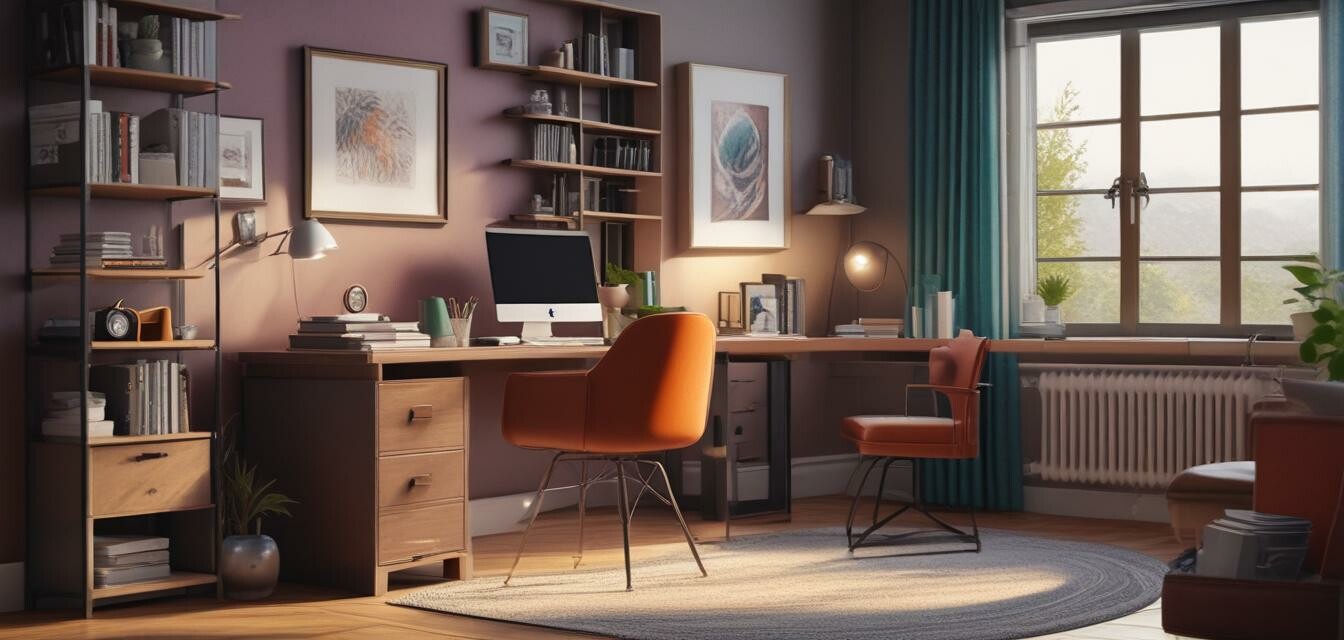
How to Incorporate Color Psychology in Your Office
Key Takeaways
- Color influences mood and productivity levels.
- Use warm colors for creativity and energy.
- Cool colors promote calmness and focus.
- Balance color choices with your office layout and furniture.
- Personalize your space to reflect your unique style.
Creating a productive and inspiring office environment goes beyond just choosing the right furniture. One of the most vital elements that can influence your mood and productivity is color. Understanding color psychology can help you design an office that energizes you and keeps your creativity flowing. In this article, we will explore various colors and their psychological effects, tips for incorporating them into your workspace, and how to personalize your office with color. Let’s dive in!
The psychology of colors
Colors have a significant psychological impact on our emotions and behaviors. Different colors evoke different responses, which is essential to consider when designing your office. Here’s a quick summary of how common colors can affect mood:
| Color | Psychological Effect |
|---|---|
| Red | Stimulates energy and passion; appropriate for creative spaces. |
| Blue | Promotes calmness and focus; ideal for concentration. |
| Yellow | Encourages optimism and creativity; enhances energy levels. |
| Green | Creates a sense of balance; refreshing and calming atmosphere. |
| Purple | Stimulates creativity and imagination; adds a touch of luxury. |
| Orange | Stimulates enthusiasm and encourages socialization. |
| Neutrals (white, gray, black) | Provides balance and sophistication; can enhance light. |
Incorporating Color Psychology in Your Office
Once you understand the psychological effects of colors, it’s time to incorporate them into your office design. Here are some practical tips for doing so:
1. Start with a color scheme
Choosing a main color can serve as the foundation for your office space. Work with complementary colors to develop an overall scheme that balances energy with calmness.
2. Focus on furniture and décor
Your furniture choices can prominently feature the colors you want to incorporate. Below are a few common ways to integrate colors:
- Desks and chairs: opt for colored office chairs or desks that fit your planned scheme.
- Decorative accessories: choose colorful accessories like pens, notebooks, and wall art.
- Rugs and curtains: add color through area rugs and curtains to enhance the ambiance.
3. Use paint strategically
If you're looking to make a larger impact, consider painting an accent wall in a bold color while keeping the rest neutral. This provides a base while adding vibrant energy as needed.
4. Personalize your color choices
Your office should reflect your personality. Consider what colors resonate with you and how they influence your productivity. Explore various styles like ergonomic chairs or office desks that come in unique hues and materials.
Color Combinations to Consider
Choosing the right color combinations can impact the overall feel of your office. Below are a few popular color pairings to ponder:
| Primary Color | Complementary Color | Overall Effect |
|---|---|---|
| Blue | Orange | Energy mixed with calmness; promotes creativity. |
| Green | Yellow | Refreshing with an energetic flair; fosters growth. |
| Purple | Yellow | Creative and inspiring; adds a touch of luxury and cheer. |
| Red | White | Bold and striking; evokes energy while remaining sophisticated. |
Conclusion
Incorporating color psychology into your office design can significantly enhance your workspace's atmosphere. By understanding the effects of different colors and making intentional choices, you can create an environment that promotes productivity and inspiration. Don’t hesitate to explore various styles and trends that resonate with your personal preferences. For more tips on creating an inviting workspace, check out our Tips and Inspiration section. Your perfect office awaits!
Tips for beginners
- Experiment with different shades before committing to a color.
- Incorporate plants to add a hint of green and enhance air quality.
- Create a mood board with your desired colors to visualize your space.
- Consider the amount of natural light in your office, as colors may appear different.
- Collect samples and swatches to compare how they work together.
Pros
- Colors can influence mood and productivity levels.
- A well-coordinated color scheme enhances aesthetics.
- Encourages a personalized and inspiring workspace.
Cons
- Choosing colors may feel overwhelming.
- Some colors can clash and detract from overall harmony.
- Color preferences may change over time.